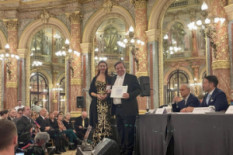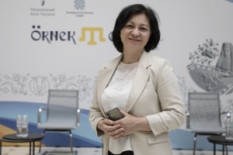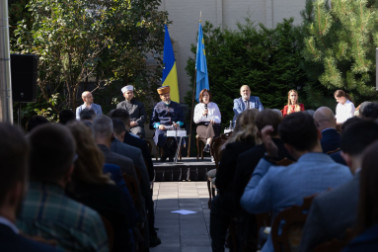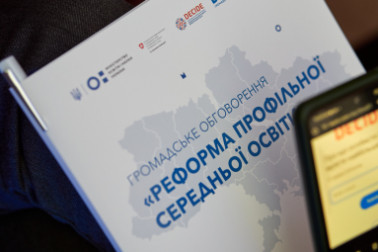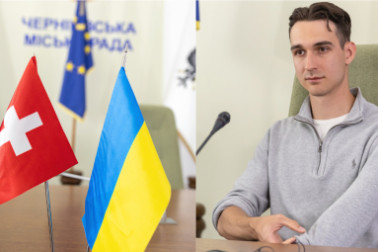Esma was born in Uzbekistan, where her family was deported in 1944 along with the entire Crimean Tatar people as a result of the Soviet regime’s criminal policies. In the 1990s, her family was able to return to their homeland in Crimea, but after the peninsula’s occupation in 2014, Esma and her family relocated to Kyiv.
Currently, Esma Adzhiieva is an active public figure, the founder and head of the NGO ALEM, which has been dedicated for over a decade to studying, preserving, and promoting the cultural heritage of her people, as well as integrating Crimean Tatar culture into the broader Ukrainian cultural space on the mainland of Ukraine.
Her work is truly global, as it focuses not only on preserving Crimean Tatar heritage but also on setting trends in cultural diplomacy for all of Ukraine. This plays a crucial role in building connections with people in different countries around the world.
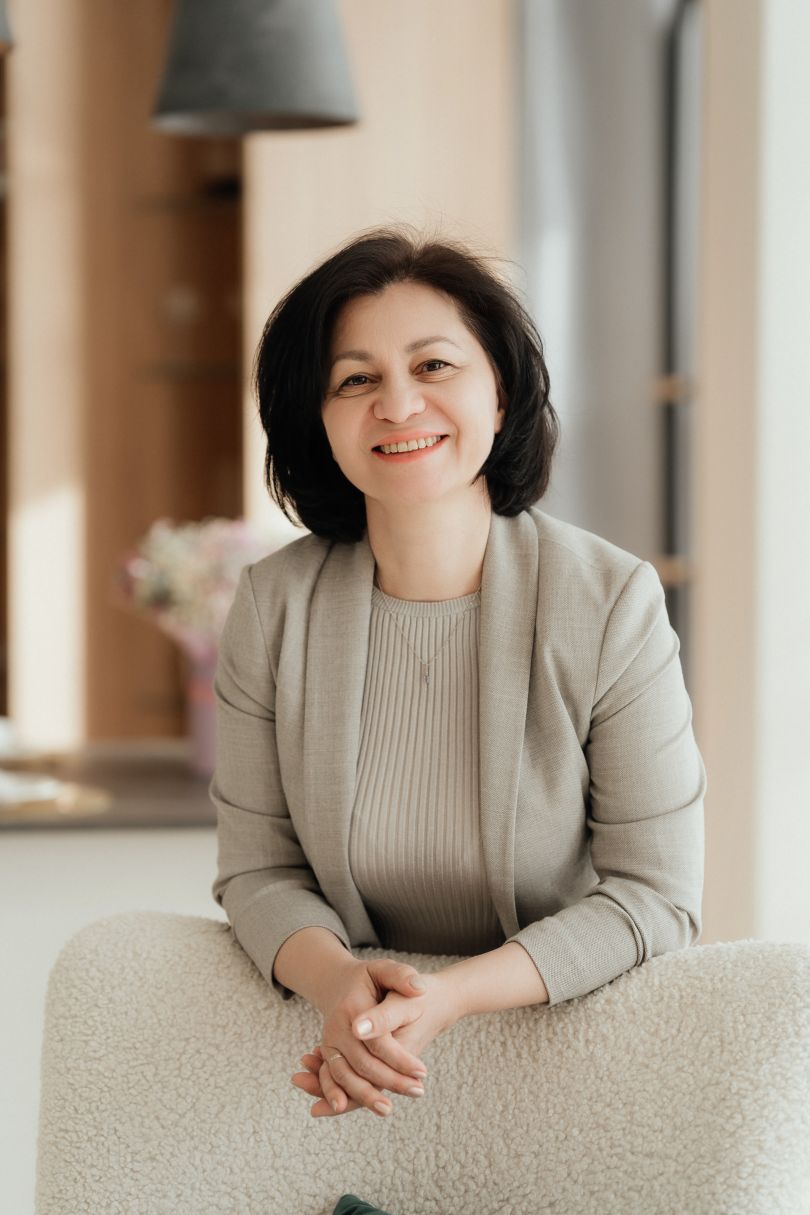
We are truly grateful for the opportunity to speak with Mrs. Esma about these vital issues that matter to us all.
You began your career in the medical field and later focused on preserving and restoring Crimean Tatar cultural heritage. These are two entirely different directions — how did you come to this significant turning point in your professional journey?
I founded the NGO ALEM in 2009 while still in Crimea, where our team actively worked to improve medical care for pregnant women and mothers with children from vulnerable groups within international projects. This work was naturally aligned with my primary profession, as I was an obstetrician-gynecologist and later a gynecological endocrinologist. Over time, I coordinated the Ukrainian-Swiss "Mother and Child Health" program in the Autonomous Republic of Crimea.
That was an incredibly active period of my career, during which I worked with more than 20 maternity hospitals in Crimea. We conducted perinatal audits-systematic critical analyses of the quality of care for mothers and newborns, as well as the overall level of medical services in maternity institutions. Based on the findings, we trained medical personnel, helping to improve healthcare standards.
Transitioning from medicine to cultural heritage preservation might seem like a drastic change, but for me, it was a natural path. In Crimea, I worked as a doctor while also managing international projects that improved healthcare systems for women and children. This activity was aimed at safeguarding life, health, and the future, while also implementing high standards of practice in the field.
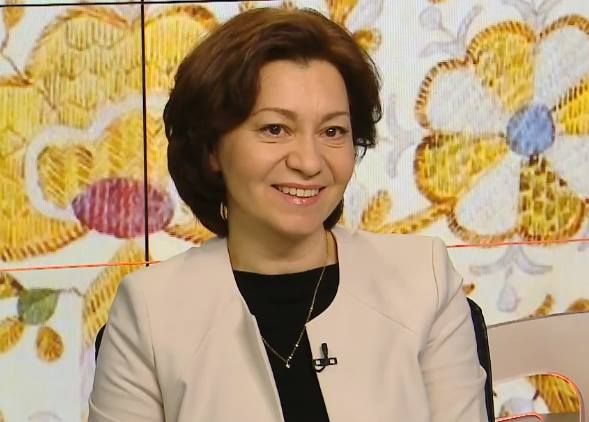
In 2014, my family and I were forced to leave everything behind and move to Kyiv. This move became a turning point, prompting deep reflection and a reassessment of my priorities. I realized that the greatest challenge for my people now was preserving our culture, language, and identity. This was also about the future, just in a different dimension. So, I focused on cultural initiatives that not only preserve our heritage but also integrate it into the broader Ukrainian and global cultural space. This became my new mission. Since then, our organization has been actively working on promoting Crimean Tatar culture, preserving our language and traditions through cultural projects and educational programs. And in this field, my experience in managing and overseeing large projects became highly relevant.
Over the past ten years, Ms. Esma has gained extensive experience in cultural and educational projects, developing strategies for preserving intangible cultural heritage. She started at the national level and later transitioned to international initiatives, becoming an expert in the field. During this time, she served as an advisor to Ukraine’s Minister of Culture (2016–2019), deputy head of the Expert Council on Intangible Cultural Heritage under the Ministry of Culture and Information Policy of Ukraine (2019–2022), an expert at the Ukrainian Cultural Foundation since 2020, and as of 2024, she represents Ukraine in UNESCO’s Intergovernmental Committee for Intangible Cultural Heritage.
Esma Adzhiieva is also the initiator of the idea to create the 'Crimean Tatar Humanities' section within the Junior Academy of Sciences of Ukraine, which brings together young researchers on this topic from different regions of Ukraine and also trains educators to work on the history and culture of the Crimean Tatars.
Additionally, she authored the documentation for the inclusion of four elements of Crimean Tatar culture in the National List of ICH Elements, an inventory representing the culture of Ukraine’s Indigenous peoples, as well as one international nomination – the Crimean Tatar ornament Ornek, which was inscribed on UNESCO’s Representative List of the Intangible Cultural Heritage of Humanity.
UNESCO’s recognition of the Crimean Tatar ornament Ornek as part of the cultural heritage of humanity is one of its significant achievements. What other projects and initiatives would you highlight as important in this field?
Over the past ten years on mainland Ukraine, our team has implemented more than 20 projects, each of which has had a profound impact thanks to the results achieved. If we summarize everything that has been done, we can confidently say that through projects dedicated to the culture of the Crimean Tatars, the indigenous people of Ukraine, we are creating new trends in Ukraine regarding the preservation of cultural heritage.
I’ll give a few examples from just one project.
We began implementing the project "Meanings Unifying People" supported by Switzerland just a week before Russia’s full-scale invasion of Ukraine. At that time, we faced a difficult question: how to proceed in such a challenging situation? How not to lose "culture" in times of full-scale war? I am immensely proud of our team because none of us left Kyiv, we all stayed together. At first, we were actively engaged in volunteer aid, but over time, we returned to our core work.
We created the website Örnek (www.ornek-crimea.com), where we introduce readers to the system of Ornek symbols and showcase the work of 31 artisans who incorporate them into their creations.
In October 2022, we presented an incredible exhibition, "MİRAS. HERITAGE," at the Treasury of the National Museum of the History of Ukraine, which became an important event in Kyiv’s cultural life. The exhibition, which is still on display today, presented for the first time a comprehensive collection of one of the brightest Crimean Tatar jewelry and household art collections in Ukraine from the 18th to the early 20th centuries. Among the exhibits are silver belts (women’s sashes) and topelik (adornments for women’s headwear, the fez), which impress with their intricate craftsmanship in the Crimean Tatar filigree technique. In addition, visitors can see silver Quran cases, men’s amulets, coffee-serving vessels, traditional Crimean Tatar clothing, as well as samples of embroidery with gold and silver thread.
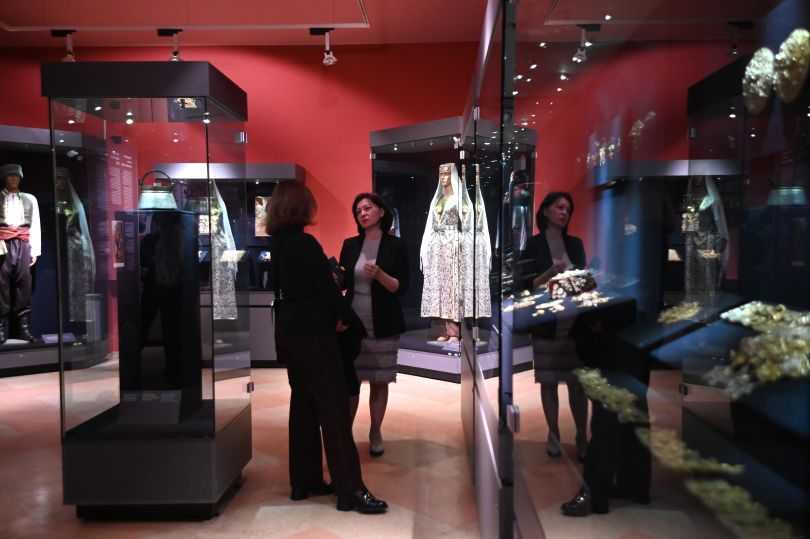
Together with the "Treasury" team and the exhibition co-curator Oleksii Savchenko, we are introducing hundreds of people to the traditions, art, and history of the Indigenous people of Crimea. We share the worldview of the Crimean Tatars through meanings hidden in details that might seem unnoticed at first glance. In particular, we discuss the profound meanings of the ornamental compositions of Ornek, which masters of decorative and applied arts have created for centuries not only as aesthetic elements of interior design but also imbued with deep symbolism. These ornaments represent prosperity, family warmth, safety, respect for elders, health, and a connection to nature and the homeland — values that are very close to and easily understood by Ukrainians.
At the end of 2024, together with the professional team of the museum, we prepared a major publication titled "Спадщина. MİRAS. The Heritage." The edition, printed in three languages, has been highly successful. Many people in Ukraine and around the world have learned about the distinctive Crimean Tatar heritage: libraries, museums, research centers, and renowned universities in more than 10 countries (USA, Japan, Switzerland, the UK, Germany, Poland, Turkey, and others). Scholars and diplomatic institutions now have the opportunity to engage with the meanings and symbolism of Crimean Tatar heritage, gain a deeper understanding of its significance in a global context, and comprehend its nuances and characteristics.
As part of the exhibition, we conduct "Ornek" art classes for people affected by the war — internally displaced persons, children, and military personnel undergoing rehabilitation programs. We have also held numerous curator-led and online tours for audiences worldwide.
I had an incredible experience working on the translation of ancient Crimean Tatar folklore, ten songs for our "Emel/Desire" project and fourteen songs for Jamala’s "QIRIM" album.
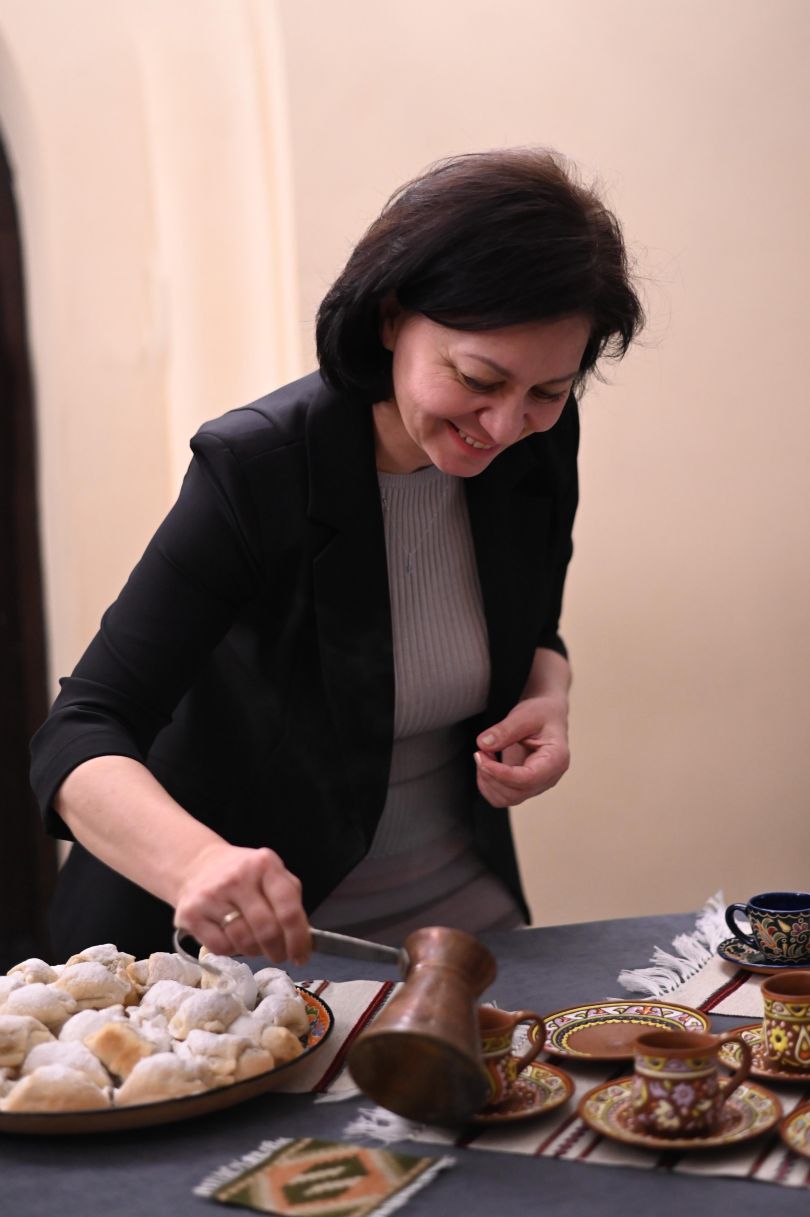
Crimean Tatar folklore is rich in metaphors, and a simple translation could not convey its profound meanings. The Ukrainian and English translations were done in several stages. First, I translated the words, then the phrases, unpacking hidden meanings and explaining the traditions behind them. Only after this did we work on poetic adaptation together with Illya Fetisov, the leader of the Bozhychi ensemble, and Julian Kytasty, a renowned bandurist from New York.
Additionally, we carried out a broad informational campaign in 12 Ukrainian cities to mark the 15th anniversary of Ukraine’s accession to UNESCO’s Convention for the Safeguarding of the Intangible Cultural Heritage. We also organized an exhibition at UNESCO’s headquarters in Paris. The initiative aimed to emphasize the importance of intangible cultural heritage in preserving national identity.
In partnership with the National Bank of Ukraine, we created a commemorative Ornek coin.
One of our proudest achievements is a joint project with the Ivan Franko National Academic Drama Theater (Kyiv), the musical performance Fainyi Franko Fusion, where renowned Ukrainian actors perform Ukrainian and Crimean Tatar folklore. We scaled this project for an audience at Taras Shevchenko Park, where more than 100 musicians from the National Presidential Orchestra and actors from the Franko Theatre created a unique musical show.
What motivates you to create such diverse yet equally global projects? Where do you find the energy to embark on these important initiatives?
All of these projects stem from my deep conviction that preserving cultural heritage and helping my people is not just a professional duty but an inner calling, a matter of our survival. My energy comes from the strong belief that my actions can shape the future of my people. The drive to change the situation, to fight for the preservation of our heritage and our future, gives me incredible strength to keep moving forward, even when the path seems difficult and exhausting. The support of like-minded individuals, my team, and the people we work with is also crucial. Equally important is the understanding that our initiatives must work in the long term, not merely as a short-term solution.
What impressions and feedback do you receive from Ukrainians who are introduced to the cultural heritage of the Crimean Tatars? Could you share interesting insights, reviews, and emotions that arise during your cultural initiatives, as well as what you’ve heard from your audience about this experience?
Receiving feedback from viewers, listeners, or readers is always an interesting and valuable experience. It allows us to understand how our work is perceived, what impact it has on people, and helps us reflect more deeply on the results of our cultural initiatives. Through these projects, Ukrainians discover not only the beauty of Crimean Tatar folklore, ornaments, music, and traditions but also the profound meanings that inspire them. They look for commonalities with Ukrainian culture and realize that Crimean Tatar heritage is an inseparable part of Ukraine’s history and cultural wealth. For my people, Crimea is the only historical homeland, and many Ukrainians understand this and hold it close to their hearts.
What are the most distinctive features of Crimean Tatar culture that set it apart from others? The very foundation?
Historically, over centuries of Islam’s presence in Crimea, Islamic rituals have become closely intertwined with the national customs of the Crimean Tatars, forming a harmonious part of the people’s traditions, family relationships, and social life. For over 45 years in exile, under conditions of deportation, our people resisted assimilation without losing their unique identity. Although much was lost, faith, traditions, and customs remained an integral part of our lives. This demonstrates the incredible resilience of our people-their ability to preserve their cultural identity even in the most challenging circumstances.
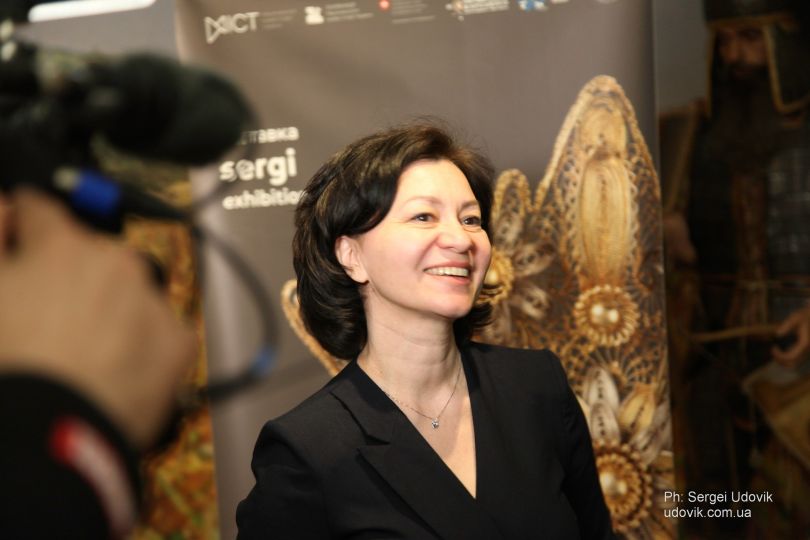
Family holds a special significance for us. Respect for elders, the duty to care for relatives, mutual support, and strong family bonds are values passed down from generation to generation. The main motif of Örnek ornamental compositions reflects these traditions that unite the family.
I always take great pleasure in speaking about the tradition of hospitality, as it is one of the most important traits of the Crimean Tatar people. Openness and sincerity, where every guest is valued and honored, and always warmly welcomed, form the essence of Crimean Tatar hospitality. The tradition of Crimean Tatar coffee-making remains a living part of social interaction among Crimean Tatars. Each preparation depends on the occasion and circumstances, helping to create an atmosphere where every guest feels important and welcomed.
What challenges, in your opinion, does Ukraine face in terms of cultural presentation on the global stage? What changes are needed?
Today, Ukraine holds a unique place on the international stage, as a result of the russian invasion, we found ourselves at the center of global attention. While we share stories of the bravery and courage of our defenders and our resilience, unfortunately, the informational space is also filled with “heavy” emotions-destruction, loss of lives, displaced people whose destinies have been shattered, as well as corruption among officials and other problems. In this context, Ukraine is often perceived through the lens of tragic events.
However, through cultural “soft power,” Ukraine has the opportunity to present itself to the world in a different light. This approach has the potential to attract the attention not only of politicians and decision-makers but also of ordinary people worldwide, touching their hearts and creating a new image of a country that, despite all difficulties, preserves its unique culture, traditions, and values.
The soft power of culture can become a strong positive attraction, allowing Ukraine to build connections and earn the sympathy of the international community, showcasing our ability to preserve and develop our national cultural heritage even in the most challenging times. Every initiative in the cultural sector must be based on a solid concept, implemented at the appropriate expert level, and not function, so to speak, on a "residual principle."
What do both the Ukrainian and Crimean Tatar peoples need for their cultures to be seen and heard by the world?
For the cultures of our peoples to be recognized and heard globally, it is essential to work actively on strengthening their professional representation on the international stage. This includes systematic participation in international cultural and research projects, festivals, exhibitions, and conferences, which will allow us to showcase the richness of our traditions and contemporary achievements in the cultural sphere.
It is also crucial to initiate joint projects with international cultural institutions, organizations, and diplomatic missions, creating opportunities for young artists, researchers, and activists who want to share their creativity and contribute to cultural development. Equally important is the creation of high-quality media content that has no territorial limitations for distribution. Such content has the potential to reach even the most distant corners of the world, fostering a deeper understanding of our values and culture.
Indeed, the soft power of Ukrainian and Crimean Tatar cultures is an effective way to communicate with the world about Ukraine and its immense cultural potential. This is also a contribution to victory, so I wish you continued success in your efforts and expansion of your work.
